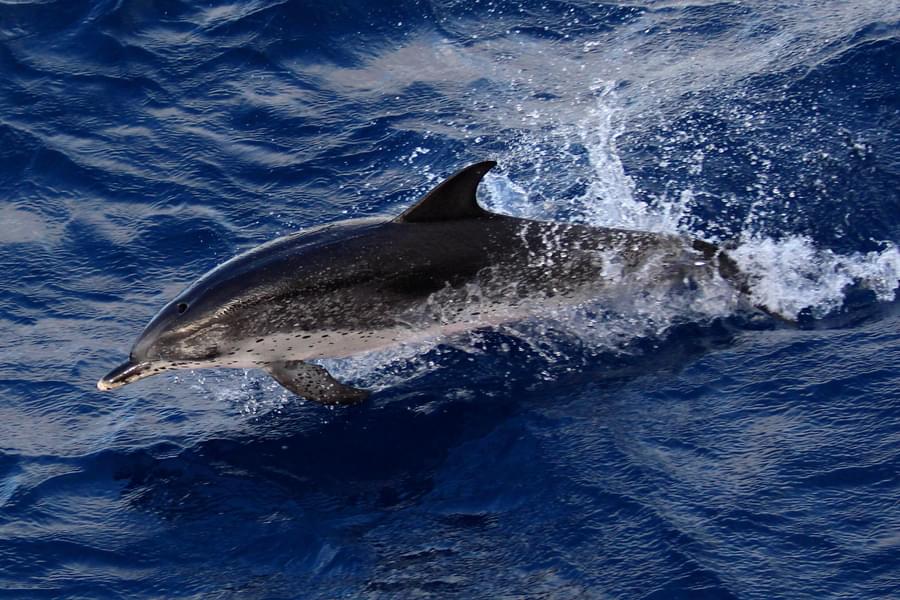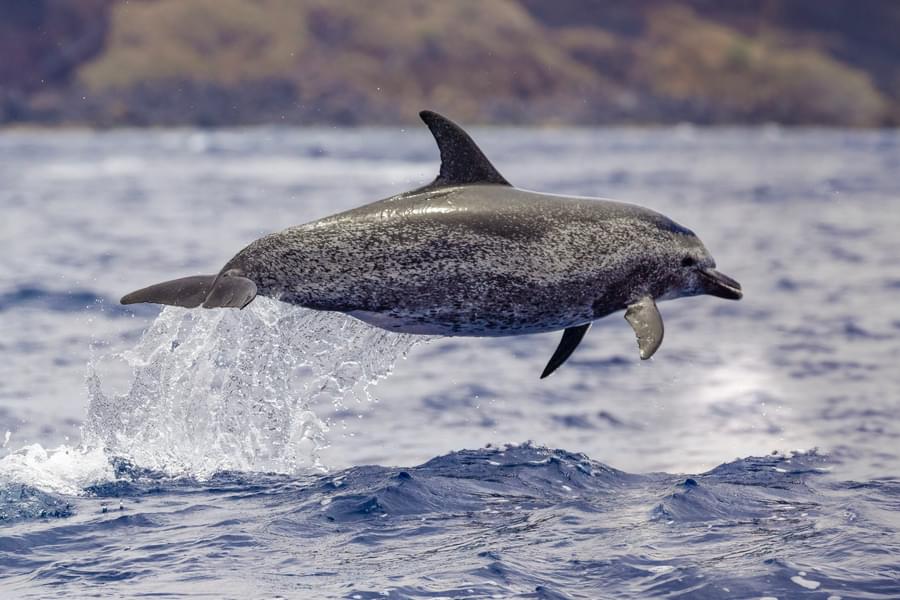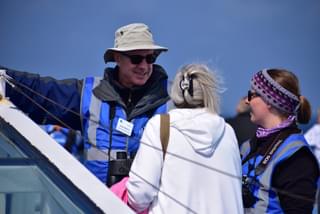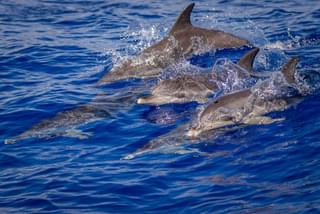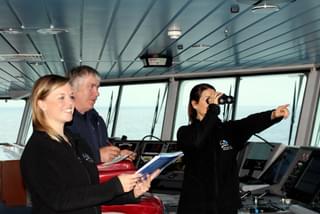Atlantic spotted dolphin
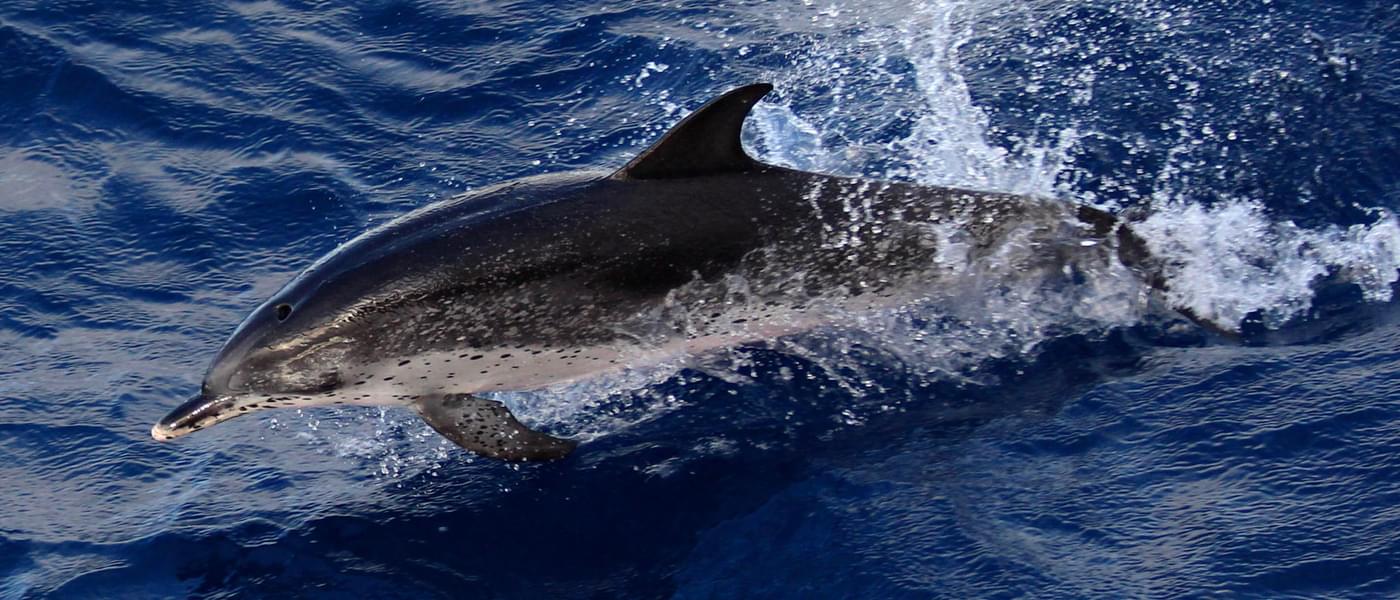
Stenella frontalis
1.5 - 2.3m
Patterned
Teeth
Dorsal fin
Atlantic spotted dolphins look like bottlenose dolphins from a distance. It is a medium-sized dolphin with a chunky beak and a very distinctive crease between the beak and the melon. They have a white tip to their beak and can also have white lips too. In colouration, Atlantic spotted dolphins have a dark cape, light grey sides and a white belly. Atlantic spotted dolphin calves don’t have spots. Adults have spotted patterns across their bodies and they increase in number with age.
Key features:
- Long, chunky beak, often white-tipped
- Curved, central dorsal fin. Upsweeping blaze from eye to dorsal fin
- Dark underparts with pale spotted pattern; spotting varies greatly between individuals
- Highly social, energetic swimmers
Behaviour
Atlantic spotted dolphins are fast acrobatic swimmers and are very active at the surface, often breaching, spinning, somersaulting, bowing and wake riding. They are typically attracted to ships to bow ride and can be observed in small and large numbers. They are often found in mixed groups with bottlenose dolphins. They form complex, sense social groups which can range in size from 5 - 100 individuals.
Threats
The major threats for Atlantic spotted dolphins include entanglement in fishing gear, marine pollution and overfishing of their prey.
Distribution
As its name suggests this species of dolphin is only found in temperate and tropical waters of the Atlantic Ocean from southern Brazil to the United States in the west and to the coast of Africa in the east. This species is mainly found on the continental shelf edge but is also known to inhabit deep oceanic waters around oceanic island like the Azores.
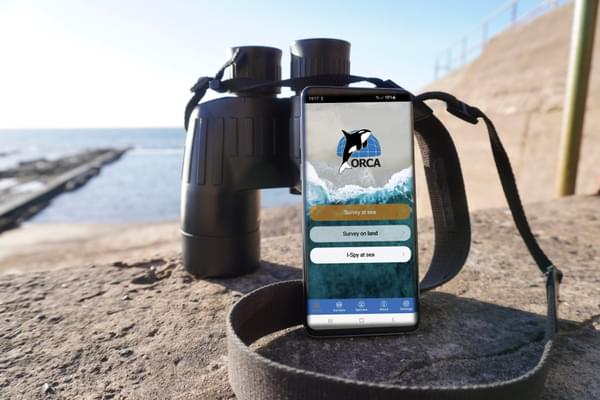
Study whales and dolphins as an ORCA OceanWatcher
The ORCA OceanWatchers online training course, along with a bespoke app, will enable everyone to collect data about whales, dolphins and porpoises. And it can be collected from anywhere that you can see the sea - whether that’s from your local beach, on holiday at the coast, scanning the seas from a cruise ship, travelling via ferry, or from your own boat.
You may also be interested in

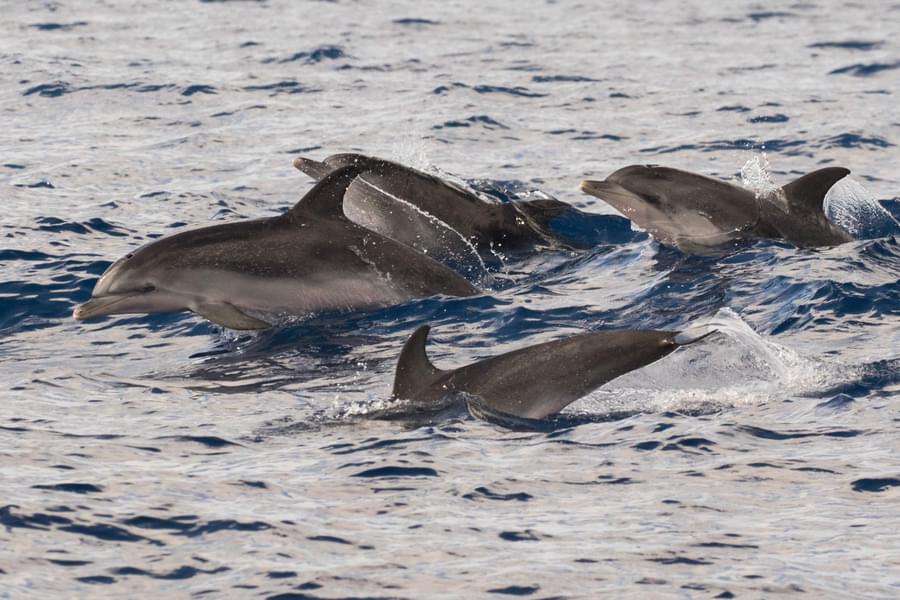
.jpg?w=900&h=600&q=85&auto=format&fit=crop&dm=1683137494&s=479522eaae6a0476e92804f4f4476f06)
